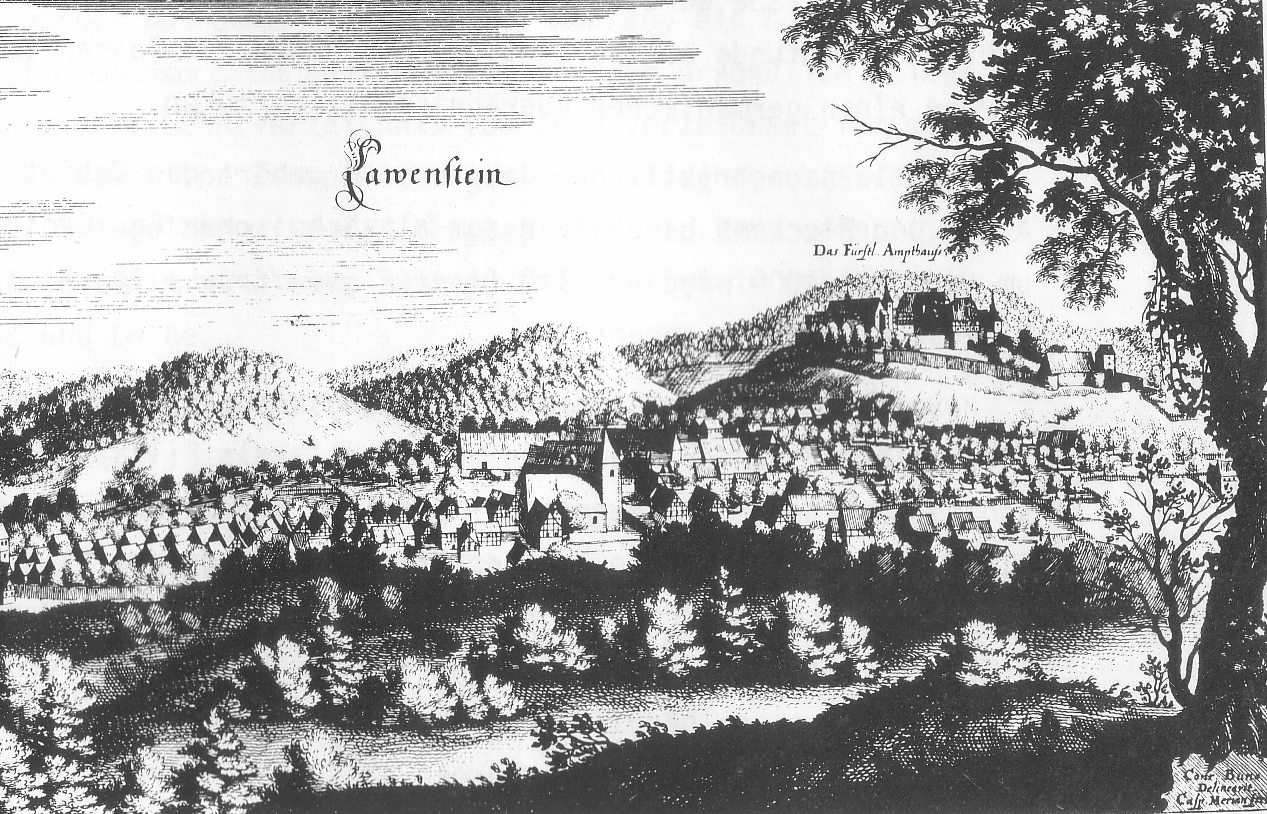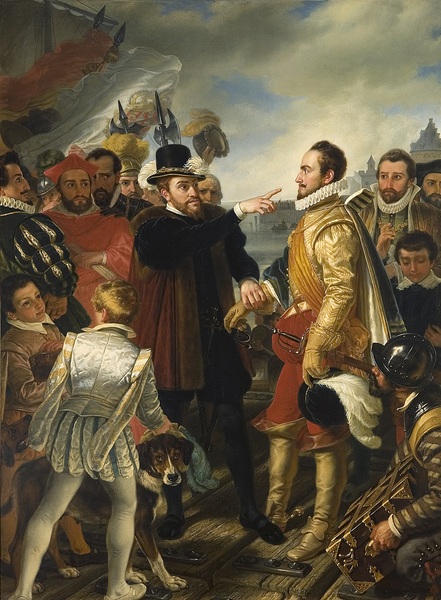|
William Frederick, Prince Of Nassau-Dietz
William Frederick (; Arnhem 7 August 1613 – Leeuwarden 31 October 1664), was Count (from 1654 Imperial Prince) of Nassau-Dietz, Stadtholder of Friesland, Groningen and Drenthe. Biography Family life William Frederick was the second son of Ernest Casimir, Count of Nassau-Dietz and Sophia Hedwig of Brunswick-Lüneburg. He married Countess Albertine Agnes of Nassau, the fifth daughter of Frederick Henry, Prince of Orange on 2 May 1652 in Cleves. They had three children: * Amalia of Nassau-Dietz (1655-1695), married to John William III of Saxe-Eisenach * Henry Casimir II, Count of Nassau-Dietz (1657-1696), married to Princess Henriëtte Amalia of Anhalt-Dessau * Wilhelmina Sophia Hedwig (1664–1667) The fact that his wife was only the fifth daughter of Frederick Henry, and that they were married after the death of her father, would later take on a special significance in the quarrel about the inheritance of the title of Prince of Orange after the death of William III of Engla ... [...More Info...] [...Related Items...] OR: [Wikipedia] [Google] [Baidu] |
Henry Casimir I Of Nassau-Dietz
Henry Casimir I of Nassau-Dietz (21 January 1612 – 13 July 1640) was count of Nassau-Dietz and Stadtholder of Friesland, Groningen and Drenthe. Life He was born in Arnhem, the eldest son of Ernst Casimir of Nassau-Dietz and Sophia Hedwig of Brunswick-Lüneburg, and, like his father, died in battle. Henry Casimir was christened at Arnhem. The English representative, Sophia Hedwig being the niece of the queen Anne of Denmark, was Sir Edward Cecil. He brought gifts of a cupboard of gilt plate, a diamond necklace with a locket, horses, and an embroidered petticoat for Sophia Hedwig. He became count of Nassau-Dietz and stadtholder of Friesland, Groningen and Drenthe upon the death of his father, Count Ernst Casimir of Nassau-Dietz, at the Siege of Roermond in June 1632. A week later, he was involved in the Capture of Maastricht, along with his cousin, Frederick Henry, Prince of Orange. Henry Casimir was wounded in Sint Jansteen at the battle of Hulst on 12 July 1640. ... [...More Info...] [...Related Items...] OR: [Wikipedia] [Google] [Baidu] |
Cleves
Kleve (; traditional ; ; ; ; ; Low Rhenish: ''Kleff'') is a town in the Lower Rhine region of northwestern Germany near the Dutch border and the River Rhine. From the 11th century onwards, Cleves was capital of a county and later a duchy. Today, Cleves is the capital of the district of Kleve in the German state of North Rhine-Westphalia. The city is home to one of the campuses of the Rhine-Waal University of Applied Sciences. Territory of the municipality In addition to the inner city, the territory of Kleve comprises fourteen villages and populated places: Bimmen, Brienen, Donsbrüggen, Düffelward, Griethausen, Keeken, Kellen, Materborn, Reichswalde, Rindern, Salmorth, Schenkenschanz, Warbeyen and Wardhausen. History The name ''Kleff'' probably derives from Middle Dutch ''clef'', ''clif'' 'cliff, bluff', referring to the promontory on which the Schwanenburg castle was constructed. Since the city's coat of arms displays three clover leaves (German ''Klee'', Lo ... [...More Info...] [...Related Items...] OR: [Wikipedia] [Google] [Baidu] |
University Of Groningen
The University of Groningen (abbreviated as UG; , abbreviated as RUG) is a Public university#Continental Europe, public research university of more than 30,000 students in the city of Groningen (city), Groningen, Netherlands. Founded in 1614, the university is the second oldest in the country (after Leiden University, Leiden). The University of Groningen has eleven Faculty (division), faculties, nine graduate schools, 27 research centres and institutes, and more than 175-degree programmes. The university's alumni and faculty include Johann Bernoulli, Aletta Jacobs, four Nobel Prize winners, nine Spinoza Prize winners, one Stevin Prize winner, various members of the Monarchy of the Netherlands, Dutch royal family, several politicians, the first president of the European Central Bank, and a secretary general of NATO. History The institution was founded as a college in 1614 in an initiative taken by the Regional Assembly of the city of Groningen and the ''Ommelanden'', or surroun ... [...More Info...] [...Related Items...] OR: [Wikipedia] [Google] [Baidu] |
Leiden University
Leiden University (abbreviated as ''LEI''; ) is a Public university, public research university in Leiden, Netherlands. Established in 1575 by William the Silent, William, Prince of Orange as a Protestantism, Protestant institution, it holds the distinction of being the oldest university in the Netherlands of today. During the Dutch Golden Age scholars from around Europe were attracted to the Dutch Republic for its climate of intellectual tolerance. Individuals such as René Descartes, Rembrandt, Christiaan Huygens, Hugo Grotius, Benedictus Spinoza, and later Baron d'Holbach were active in Leiden and environs. The university has seven academic faculties and over fifty subject departments, housing more than forty national and international research institutes. Its historical primary campus consists of several buildings spread over Leiden, while a second campus located in The Hague houses a liberal arts college (Leiden University College The Hague) and several of its faculties. It i ... [...More Info...] [...Related Items...] OR: [Wikipedia] [Google] [Baidu] |
Lauenstein (Salzhemmendorf)
Lauenstein is a village in the municipality of Salzhemmendorf in the Lower Saxony, Lower Saxon district of Hameln-Pyrmont in north Germany. It has about 2,100 inhabitants. Geography Lauenstein lies in the Weser Uplands, not far from the only low saddle in the crest of the Ith, in a valley that descends eastwards at right angles to the Ith ridge. Part of its more recent built-up area extends out of the valley to the eastern slopes of the Ith and into the Saale valley. History Feudal tenure The feudal lords in the district (''Amt'') area were the barons of Homburg, who exercised power from 1152 to 1409. Their seat was at the castle of Homburg (Stadtoldendorf), Homburg near Eschershausen. The counts of Spiegelberg were also feudal lords here from 1152 to 1557. They resided at Spiegelberg Castle and later at Coppenbrügge Castle. Another important feudal lord was ''Bock von Nordholz'', who was resident at Nordholz Castle in Nordholz on the Osterwald (ridge), Osterwald. Middl ... [...More Info...] [...Related Items...] OR: [Wikipedia] [Google] [Baidu] |
Diez, Germany
Diez () is a town in Germany's Rhein-Lahn-Kreis, Rhein-Lahn district in Rhineland-Palatinate, on the borders of Hesse. Diez is the administrative seat of the Diez (Verbandsgemeinde), municipality of Diez. Sitting on the confluence of the Lahn and Aar rivers, the town and the area have been inhabited by humans since the Stone Age. The old town is dominated by an eleventh century castle, now a youth hostel and museum. It is the ancestral home of the House of Nassau-Dietz, which in 1815 became the Monarchy of the Netherlands, Dutch royal family. Geography Geographical Location The center of Diez is located four miles southwest of Limburg an der Lahn and 31 miles east of Koblenz. Diez, in Rheinland-Pfalz, and the adjoining city of Limburg, in the state of Hessen, are so close that in modern times they have increasingly merged into a single urban area, although they remain historically and politically distinct. The low rolling hills around Diez form part of the Rhenish Massif, Rh ... [...More Info...] [...Related Items...] OR: [Wikipedia] [Google] [Baidu] |
William Louis, Count Of Nassau-Dillenburg
William Louis of Nassau-Dillenburg (; ; 13 March 1560, Dillenburg, Hesse – 13 July 1620, Leeuwarden, Netherlands) was Count of Nassau-Dillenburg from 1606 to 1620, and stadtholder of Friesland, Groningen, and Drenthe. Life William Louis was the eldest son of John VI, Count of Nassau-Dillenburg and his first wife, Elisabeth of Leuchtenberg. He served as a cavalry officer under William the Silent. Together with his cousin (and brother-in-law) Maurice of Nassau, Prince of Orange, he commanded the Dutch States Army and helped plan the military strategy of the Dutch Republic against Spain from 1588 to 1609. William Louis played a significant part in the Military Revolution of the 16th–17th centuries. In a letter to his cousin Maurice of Nassau, Prince of Orange which he composed on 8 December 1594, he set out (from reading Aelianus Tacticus) an argument based on the use of ranks by soldiers of Imperial Rome as discussed in Aelian's Tactica. Aelian was ... [...More Info...] [...Related Items...] OR: [Wikipedia] [Google] [Baidu] |
William The Silent
William the Silent or William the Taciturn (; 24 April 153310 July 1584), more commonly known in the Netherlands as William of Orange (), was the leader of the Dutch revolt against the Spanish Habsburg Netherlands, Habsburgs that set off the Eighty Years' War (1568–1648) and resulted in the formal independence of the Dutch Republic, United Provinces in 1648. Born into the House of Nassau, he became Prince of Orange in 1544 and is thereby the founder of the House of Orange-Nassau, Orange-Nassau branch and the ancestor of the monarchy of the Netherlands. In the Netherlands, he is also known as Father of the Nation, Father of the Fatherland (; ). A wealthy nobleman, William originally served the Habsburgs as a member of the court of Margaret of Parma, governor of the Spanish Netherlands. Unhappy with the centralisation of political power away from the local estates and with the Spanish persecution of Dutch Protestants, William joined the Dutch uprising and turned against his fo ... [...More Info...] [...Related Items...] OR: [Wikipedia] [Google] [Baidu] |
John VI, Count Of Nassau-Dillenburg
Count John VI of Nassau-Dillenburg (22 November 1536 – 8 October 1606) was the second son of William the Rich and the younger brother of William the Silent. He has a special place in the history of the Netherlands because he is the male-line forefather of the House of Orange. John VI of Nassau-Dillenburg was a Count of Nassau in Dillenburg. Other names he had were ''Jan VI'' or ''Jan de Oude'' ("John the Elder", to distinguish him from his 2nd son, "John the Middle", and his grandson "John the Younger"). John VI was born in Dillenburg, the second son of Count William I of Nassau-Dillenburg and his second wife Juliane of Stolberg-Wernigerode and brother of William I of Orange. He was the principal author of the Union of Utrecht. Family and children John VI was married three times and had a total of 24 children: First, he was married on 16 June 1559 with Elisabeth of Leuchtenberg (ca. March 1537 – 6 July 1579), who bore him 13 children: # Count Willem Lodewijk "Us ... [...More Info...] [...Related Items...] OR: [Wikipedia] [Google] [Baidu] |
Diez - Landgrafenschloss
Diez may refer to: *Diez (surname) *''Diez'', a sports newspaper in Bolivia * ''Diez'' (Honduras), a newspaper in Honduras *''Diez'' or '' X'', an album by Intocable *Diez, Germany, a town in Rhineland-Palatinate *Diez (Verbandsgemeinde) Diez is a ''Verbandsgemeinde'' ("collective municipality") in the Rhein-Lahn-Kreis, in Rhineland-Palatinate, Germany Germany, officially the Federal Republic of Germany, is a country in Central Europe. It lies between the Baltic Sea and the ..., a collective municipality in Rhineland-Palatinate See also * Dietz {{disambiguation ... [...More Info...] [...Related Items...] OR: [Wikipedia] [Google] [Baidu] |
Louise Henriette Of Nassau
Louise Henriette of Nassau (, ; 7 December 1627 – 18 June 1667) was a Countess of Nassau, granddaughter of William I, Prince of Orange, "William the Silent", and an Electress of Brandenburg. Biography Louise Henriëtte was born in The Hague, the eldest daughter of Frederick Henry, Prince of Orange, and Amalia of Solms-Braunfels. She grew up at the court of her father, the ''Stadtholder'' of Holland, Zeeland, Utrecht, Guelders and Overijssel. Marriage Louise Henriëtte had to abandon her love for Henri Charles de La Trémoille, Prince of Talmant, son of Henry de La Trémoille, as her mother had royal ambitions for her. However, attempts to conclude an engagement with King Charles II of England came to nothing. Finally she was forced to marry Frederick William, Elector of Brandenburg (1620-1688), "the Great Elector," at The Hague on 7 December 1646, her nineteenth birthday, on the proposal of the Brandenburg diplomat Joachim Friedrich von Blumenthal. The Electorate of B ... [...More Info...] [...Related Items...] OR: [Wikipedia] [Google] [Baidu] |
William III Of England
William III (William Henry; ; 4 November 1650 – 8 March 1702), also known as William of Orange, was the sovereign Prince of Orange from birth, Stadtholder of County of Holland, Holland, County of Zeeland, Zeeland, Lordship of Utrecht, Utrecht, Guelders, and Lordship of Overijssel, Overijssel in the Dutch Republic from 1672, and List of English monarchs, King of England, Monarchy of Ireland, Ireland, and List of Scottish monarchs, Scotland from 1689 until his death in 1702. He ruled Great Britain and Ireland with his wife, Queen Mary II, and their joint reign is known as that of William and Mary. William was the only child of William II, Prince of Orange, and Mary, Princess Royal and Princess of Orange, Mary, Princess Royal, the daughter of King Charles I of England, Scotland, and Ireland. His father died a week before his birth, making William III the prince of Orange from birth. In 1677, he Cousin marriage, married his first cousin Mary, the elder daughter of his maternal u ... [...More Info...] [...Related Items...] OR: [Wikipedia] [Google] [Baidu] |







